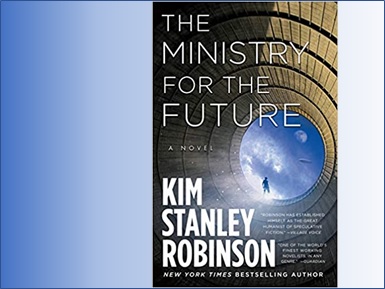Kim Stanley Robinson has written a lot of books, but The Ministry for the Future is the first of his that I’ve read, largely because of the topic. I know quite a bit about climate change and the impacts of the energy system on greenhouse gas emissions. Thus, I was interested to learn how Robinson thought the planet’s future might unfold.
The Ministry for the Future takes place from present day through about 40 or 50 years from now. The focus of the book is on how changes to the planet affect humans, animals, plants… everything, really. This is a big, sprawling topic.
One way in which Robinson attempts to corral the subject is to focus on a hypothetical agency spun out of the UN Paris Agreement, the Ministry for the Future. The book follows the head of this agency as she attempts to change society for the better in order to stop rising levels of CO2 in the atmosphere (and all that entails). The book also follows a young aid worker who survives (just barely) a catastrophic climate-induced heat wave, which kills millions of people, but spares him, leaving him tortured by PTSD for the rest of his life. There’s also a generous serving of geo-engineering in the book, though it might be a spoiler to give hints as to how it comes out. And these are just the main threads; the book is packed with many, many short vignettes, from the inner life of a carbon atom to the heartache of climate refugees.
The book is huge: 577 pages in print or over 20 hours of audiobook. I opted for the audiobook, which was less of a slog than the book might have been, thanks to multiple, excellent narrators.
The hard science and engineering in the book have been well thought out and researched. Of course, no one can really know the results of large-scale geo-engineering, but Robinson’s speculations are believable. The attempts at societal engineering are less credible, in my mind. The author has evident biases as to how society ought to run, which, to me, seem to color his speculation about the future. Of course, as the author, this is his prerogative.
At the smaller scale of human interaction, the book resonates in a way that the big-scale societal interactions do not. By following a few characters throughout the entire book, Robinson illustrates the anguish and joy of the struggle to save the planet in ways that are more memorable than geo-engineering. The chapters that affected me most were the vignettes about the loss and sadness people experienced, while at the same time struggling to go on.
I don’t know what the author had in mind in the writing of this book, but if the author intended to create a call to climate action, the book would have been a better vehicle if it had been considerably shorter and pruned to focus on the human scale of the global climate crisis.

Comments are closed